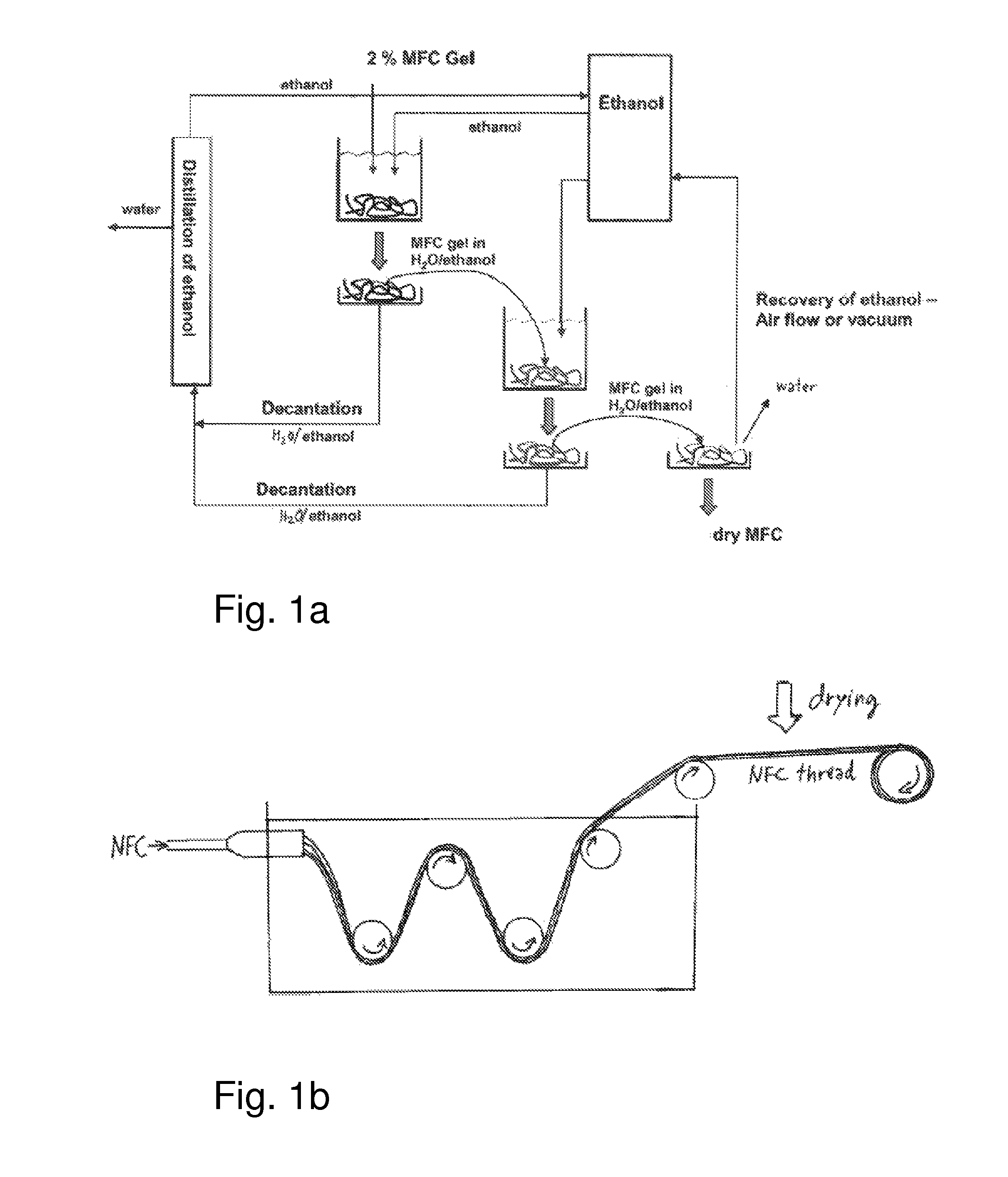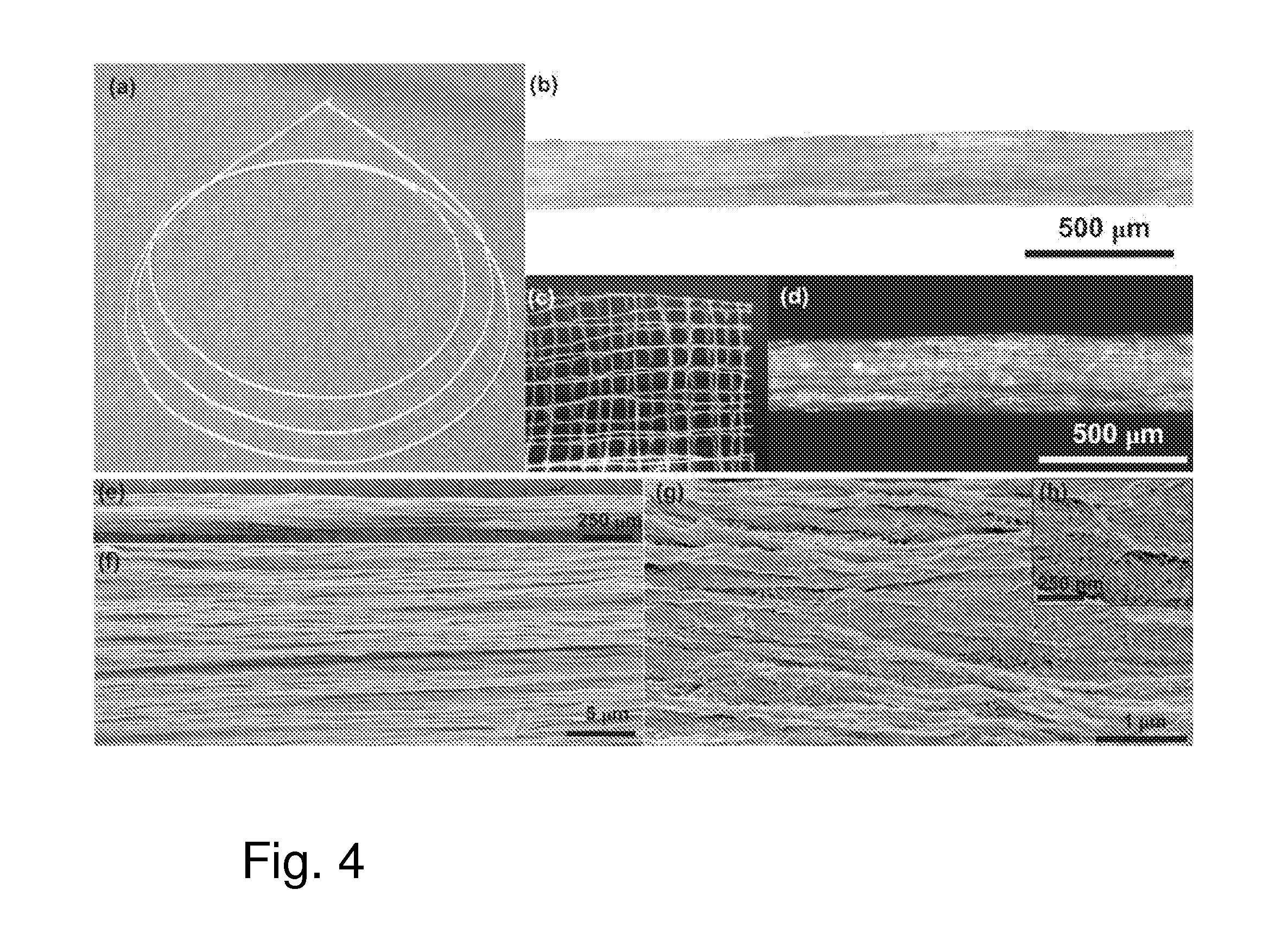Method for fabricating fiber products and composites
a technology applied in the field of fiber products and composites, can solve the problems of poor mechanical properties, difficult nature of nfc, and significantly beyond the mechanical performance of molecular cellulose materials, and achieve excellent mechanical properties
- Summary
- Abstract
- Description
- Claims
- Application Information
AI Technical Summary
Benefits of technology
Problems solved by technology
Method used
Image
Examples
Embodiment Construction
[0037]In this context, the term “nanofibrillar cellulose” or “nanofibrillated cellulose” (NFC for short) is used, it being understood that also “microfibrillar cellulose” (MFC) or “nanocellulose” are commonly used terms for the substance to be described in more detail below.
[0038]The nanofibrillar cellulose consists of cellulose fibres whose diameter is in the submicron range. It forms a self-assembled hydrogel network even at low concentrations. At very low concentration a viscous fluid is obtained. These gels of nanofibrillar cellulose are highly shear thinning and thixotrophic in nature.
[0039]The nanofibrillar cellulose is prepared normally from cellulose raw material of plant origin. The raw material can be based on any plant material that contains cellulose. The raw material can also be derived from certain bacterial fermentation processes. Plant material may be wood. Wood can be from softwood tree such as spruce, pine, fir, larch, douglas-fir or hemlock, or from hardwood tree ...
PUM
| Property | Measurement | Unit |
|---|---|---|
| diameters | aaaaa | aaaaa |
| Young's modulus | aaaaa | aaaaa |
| temperature | aaaaa | aaaaa |
Abstract
Description
Claims
Application Information
 Login to View More
Login to View More - R&D
- Intellectual Property
- Life Sciences
- Materials
- Tech Scout
- Unparalleled Data Quality
- Higher Quality Content
- 60% Fewer Hallucinations
Browse by: Latest US Patents, China's latest patents, Technical Efficacy Thesaurus, Application Domain, Technology Topic, Popular Technical Reports.
© 2025 PatSnap. All rights reserved.Legal|Privacy policy|Modern Slavery Act Transparency Statement|Sitemap|About US| Contact US: help@patsnap.com



